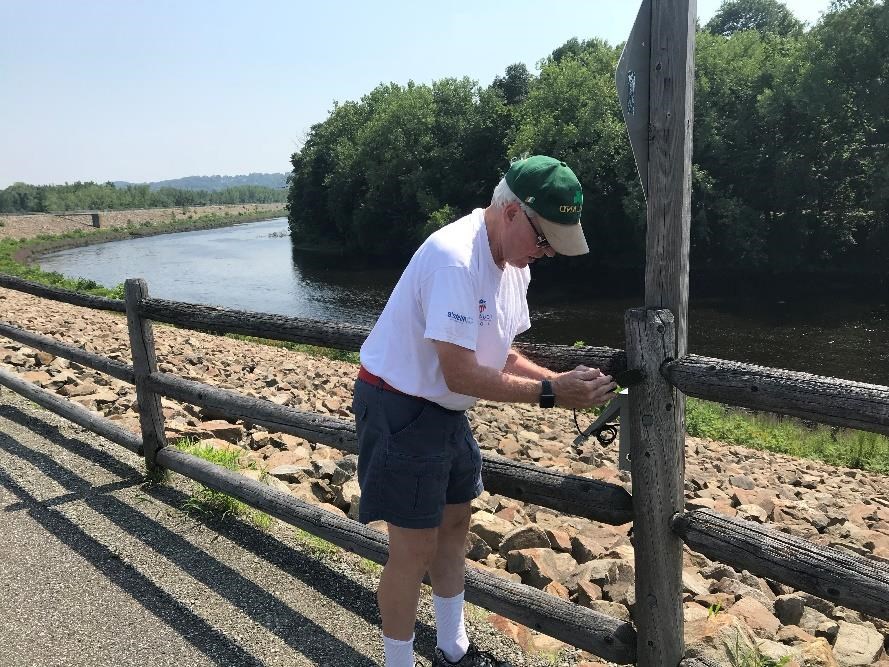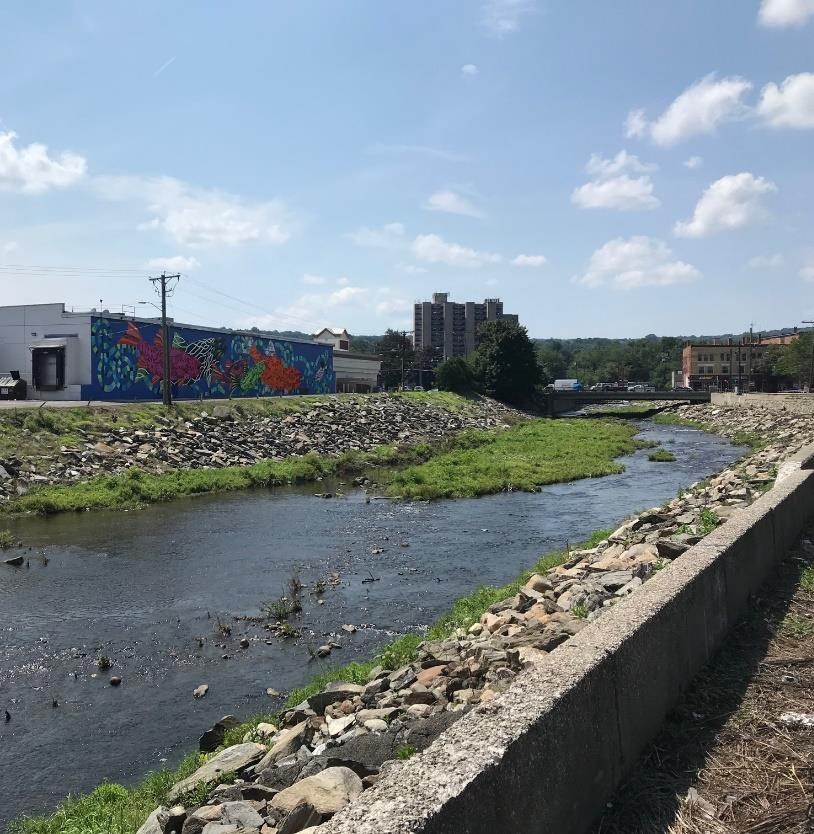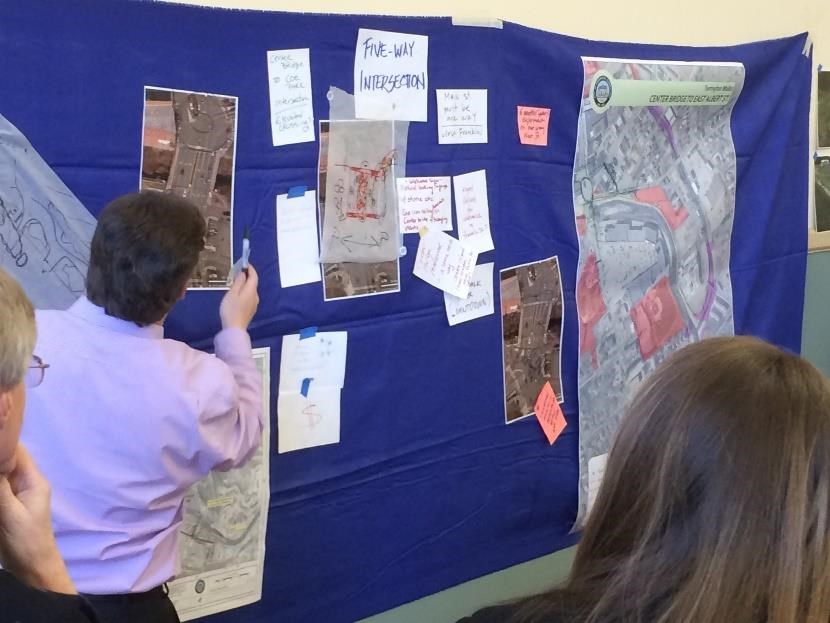Last updated: February 9, 2022
Article
Naugatuck River Greenway Restoration Inspires Hope

By Kendra Barat
Two hurricanes, one week.
In 1955, two disastrous storms ripped through southern New England, ravaging communities in the Naugatuck River and Housatonic River valleys in Connecticut. The subsequent flooding caused extensive damage to towns and businesses along the river. The Naugatuck River had become one of the most heavily polluted waterways in the country, riddled with chemical, industrial and physical waste. The state of the river became a concern for residents and visitors, deterring economic development in the valley.
In what Jack Walsh, lifetime resident of Derby, Connecticut, and co-chair of the Naugatuck River Greenway Steering Committee calls “one of the greatest environmental clean-up efforts in the United States,” the Naugatuck River underwent a massive restoration effort in the 1990s.
Once a waterway that people stayed away from, the Naugatuck River is now a bustling ecosystem and home to many different species of wildlife and plants. Since the restoration, towns and cities situated along the river utilize this natural resource to provide their communities with improved outdoor recreation, transportation and economic development opportunities.

While working on projects in various Naugatuck River Valley communities, John Monroe, project specialist for the National Park Service – Rivers, Trails and Conservation Assistance program, was introduced to an idea: connect the 11 towns along the river with a greenway from Torrington in the north to Derby in the south.
Monroe’s first step was to create the Naugatuck River Greenway Steering Committee in an effort to convene important and interested stakeholders from the Naugatuck Valley.
“Let’s not do organization building theoretically. Let’s figure out what we want to do and go do it, and in the process we’ll learn how to work together,” Monroe said. The steering committee is comprised of invested representatives from each of the 11 towns, the Naugatuck Valley Council of Governments and regional planning groups such as Valley United Way.
“John was really great at overseeing productive meetings,” Aaron Budris, senior regional planner with the Naugatuck Valley Council of Governments said. Budris described Monroe as an “organization-builder,” who was able to effectively and appropriately manage committee meetings, help others see different perspectives, and ultimately left the project developers in an ideal position to carry on necessary work.
The interconnected greenway will also yield notable economic benefits for the surrounding
communities.

“If you build a multi-use trail like this, you’re going to see an economic return, and not only from people coming to use it and spending money in your town,” Budris said.
Other anticipated benefits derived from development of the greenway include increased property values. In the most northern city of Torrington, the greenway is still in planning and development phases. The city is looking to bring it through lower income neighborhoods in the hope that properties will become “more attractive, so as they begin to sell or come up for sale,” said Rista Malanca, co-chair of the steering committee and director of economic development for the city of Torrington. “Just the idea that [the greenway is] coming is bringing excitement and businesses are looking at that area. I see more and more people getting involved, and more and more organizations wanting to know about the greenway.”
In 2017, the Naugatuck Valley Council of Governments, with guidance from the steering committee, published an economic impact report to quantify and validate construction of the greenway and its economic benefits.
Economic benefits were not the primary focus of the project when the first section of the greenway was built in Derby, according to Budris. However, as the most heavily used section of trail in Connecticut according to the Connecticut Trail Census, the Naugatuck Valley Council of Governments is developing strategies to entice greenway users to shop and eat in downtown Derby.

The economic impact report estimates that the total $77.2 million cost of constructing and maintaining the 44-mile greenway between 2016 and 2030 is “significantly returned and exceeded by the monetized benefits,” which include cumulative health benefits, direct user spending and consumer surplus. Total economic benefits are estimated at $336.8 million.
“We’re in the infancy of realizing the economic importance of this trail. It’s always sort of in the back of our minds,” said Budris who believes the greenway is going to be “transformative” for every community it touches.
The National Park Service also supported the production of a promotional video, and helped coordinate a bike ride event in Sept. 2012. Walsh speaks fondly of the video, as it highlighted his town’s hard work to construct their portion of the greenway, and showcased what the other sections could be like.
“He [John Monroe] had expertise that people on the committee didn’t have,” Walsh said. “When he came in and got that video done, it was an eye-opener for a lot of people.”
The bike ride event, which took about 50 cyclists on a ride from Torrington south to Derby, and the promotional video garnered excitement and built a baseline of support for what the greenway could eventually become.
The short film, which is still prominent on websites and popular in the Naugatuck River Greenway area, “allows us to keep telling the story,” Monroe said.

The greenway is far from being completed, but committee members and other stakeholders are satisfied with its steady progress. Most recently, construction for a two-mile stretch began in Aug. 2019.
Walsh, an avid user of the 1.7 mile Derby section of the greenway is hopeful that the 44-mile trail will be completed and connected within the next 20 years. “I think it’s one of the best things our town has done in the last 50 years,” Walsh said.
“It’s going to take a long time to happen, but that’s not a sign of weakness,” Monroe said. “It’s a sign of complexity.”
